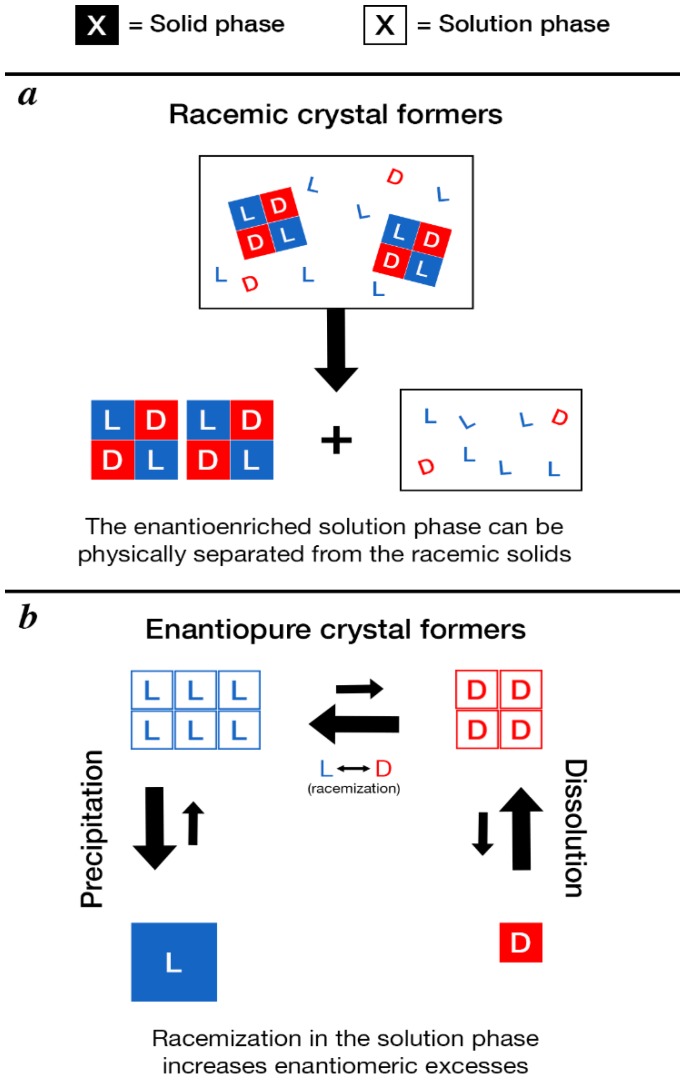Figure 7.
Schematic of crystallization-based enantioenrichment mechanisms. (a) For amino acids that preferentially form racemic crystals, in a saturated solution with one enantiomer present in excess, the solid phase would be racemic and the solution phase would be enriched to a greater degree than the overall enantiomeric excess (counting both the solution and solid phase). The enantioenriched solution phase can be physically separated from the racemic solid during aqueous alteration. (b) For amino acids that preferentially form enantiopure crystals, in a saturated solution where one enantiomer is present in excess, that enantiomer will tend to form more crystals that are larger, while the less abundant enantiomer will form fewer crystals that are smaller. In this case the solution phase will be racemic, so racemization would affect both enantiomers equally. However, producing more of the more abundant enantiomer will cause more of it to precipitate, increase the enantiomeric excess.

